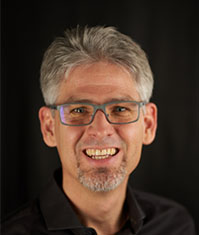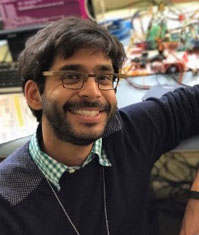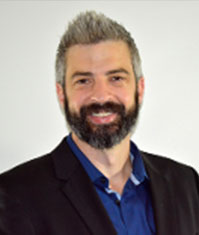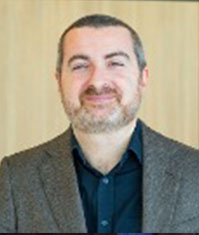
IEEE LEO SatS Space Environment Workshop • 13 November 2024 at 9 AM ET
Low Earth orbit (LEO) satellites operate in a demanding environment where radiation and other space phenomena have a significant impact. Designing and testing for this environment is a critical success factor for any satellite program.
This free online workshop was held on 13 November 2024 from 9 am – 12:30 pm EST.
Watch the recorded sessions of this informative event to enhance your knowledge of radiation effects and testing methodologies, enabling you to better safeguard electronic systems in high-radiation environments.
This event offered a comprehensive exploration of the challenges and solutions in managing radiation effects on electronic systems, particularly for space applications.
We invited all (including non-experts) interested in the fields of aerospace, electronics, and radiation testing, offering a blend of foundational knowledge and advanced techniques to join our Workshop.
This informative event aimed to enhance knowledge of radiation effects and testing methodologies, enabling you to better safeguard electronic systems in high-radiation environments.
Workshop Highlights:
- Introduction to Space Weather: This session will cover the fundamentals of space weather, including solar flares, cosmic rays, and other phenomena that can impact aerospace and satellite systems. Participants will gain a clear understanding of how space weather can influence electronic functionality and reliability in orbit.
- An Overview of Radiation Effects in Electronics: Explore how different types of radiation (e.g., cosmic, solar) affect electronics at the micro and macro levels. This session will delve into single-event effects, total ionizing dose, and displacement damage, helping attendees understand the potential risks and failure mechanisms.
- RADNEXT – Building a Network of Irradiation Facilities: Learn about RADNEXT, a global initiative focused on establishing a network of irradiation facilities dedicated to testing and improving radiation resilience in electronics. This network supports collaboration across industries, providing comprehensive testing opportunities and fostering a community for sharing best practices.
- Radiation Hardness Assurance: This session introduces methods for ensuring that electronic components and systems maintain functionality over their operational lifespan in radiation-prone environments. Attendees will learn about RHA standards, testing protocols, and techniques to verify the durability of components used in critical aerospace and defense applications. • Introduction to Radiation Mitigation Strategies: Discover practical strategies to mitigate the effects of radiation on electronics. Topics include shielding techniques, redundancy, error correction, and design modifications aimed at enhancing the resilience of components against radiation-induced degradation.
- Radiation Testing Techniques: Dive into the testing processes and methods for evaluating the radiation tolerance of electronic components. The session covers proton and heavy-ion testing methods, commonly used to simulate space radiation effects, and discusses the data analysis required to interpret testing outcomes accurately.
- Alternative Testing Approaches: This session explores alternative and innovative approaches to radiation testing, such as the use of CERN’s CHARM facility and potential low costs pulsed focused x-rays to emulate heavy-ions that are usually very expensive in testing. This workshop is open to anyone interested in space technology, radiation effects, and electronics resilience, from seasoned professionals to curious enthusiasts. Participants will gain valuable insights into the complexities of radiation effects, learn about the latest advancements in radiation testing, and discover best practices for safeguarding electronics in challenging environments. Whether you’re an engineer, scientist, student, or hobbyist, join us to explore these critical topics and engage in discussions with industry experts.
| Start (EDT) | Duration | Speaker | Topic |
|---|---|---|---|
| 9:00 AM | 10 min | Dr. Jan Budroweit | Welcome Message |
| 9:15 AM | 20 min | Luca Spogli | Introduction to Space Weather |
| 9:35 AM | 20 min | Andrea Coronetti | An Overview of Radiation Effects in Electronics |
| 10:00 AM | 20 min | Dr. Gerd Datzmann | Building a Network of Irradiation Facilities |
| 10:25 AM | 25 min | Dr. Viyas Gupta | Introduction to Radiation Hardness Assurance |
| 10:55 AM | 20 min | Michael Campola | Introduction to radiation mitigation strategies |
| 11:20 AM | 20 min | Gregory Allen | Best Practices for SEE Testing – Heavy Ions and Protons |
| 11:45 AM | 15 min | Dr. Ennio Capria | How Synchrotron Light Sources can help Overcome Major Limitations related to Heavy Ions Single Event Effects Testing in Electronic Circuits |
| 12:05 PM | 15 min | Dr. Salvatore Danzeca | From Particle Accelerators to Space: A Unique Approach to Radiation Testing at CERN’s CHARM Facility |
| 12:25 PM | 10 min | Dr. Jan Budroweit | Closing Remarks |
Presentation Topics and Speaker Bios:
Talk Title: Introduction to Space Weather
Speaker: Luca Spogli, Istituto Nazionale di Geofisica e Vulcanologia (INGV)
Abstract: Space weather refers to the physical and phenomenological conditions of natural space environments. It focuses on understanding and predicting the state of the Sun, as well as interplanetary and planetary environments, through observation, monitoring, analysis, and modeling. It also examines solar and non-solar driven disturbances that affect these environments, aiming to forecast and nowcast their potential impacts on both biological and technological systems. Space weather events can have a significant impact on satellite operations, communication networks, Global Navigation Satellite System (GNSS) positioning accuracy, and even power grids on Earth. This seminar will introduce the key concepts of space weather, its causes, and its effects on various technologies. It will take participants on a journey from the Sun to Earth, highlighting the importance of understanding and preparing for space weather events.
 Luca Spogli is a research scientist at the Istituto Nazionale di Geofisica e Vulcanologia (INGV) in Italy. His work focuses on the study and modeling of irregularities of the Earth’s ionosphere, alongside the analysis and management of data collected from ground-based instruments, such as GNSS receivers and ionosondes, and satellites for ionospheric research with a focus on Space Weather.
Luca Spogli is a research scientist at the Istituto Nazionale di Geofisica e Vulcanologia (INGV) in Italy. His work focuses on the study and modeling of irregularities of the Earth’s ionosphere, alongside the analysis and management of data collected from ground-based instruments, such as GNSS receivers and ionosondes, and satellites for ionospheric research with a focus on Space Weather.
Currently, Luca serves as the Vice-President of the European Space Weather and Space Climate Association (E-SWAN).
Talk Title: An Overview of Radiation Effects in Electronics
Speaker: Dr. Andrea Coronetti, The Exploration Company
Abstract: In this presentation we will briefly introduce the main radiation effects that can affect electronics used in space. This will provide a short introduction to the topics related to Total Ionizing Dose (TID) and the vast world of Single Event Effects (SEEs). The presentation mainly deals with presenting the nature of these effects and the possible impact at transistor and device level.
 Andrea Coronetti has received is PhD in Applied Physics from the University of Jyvaskyla, Finland, on the topic of ‘relevance and guidelines of radiation effects testing beyond the standards for electronic devices and systems used in space and accelerators’. During and after his PhD, he has worked for 6 years at the European Organization for Nuclear Research (CERN) and has been involved in the implementation of several EU-funded projects, such as the network of European facilities (RADNEXT), and the High-energy heavy ions for electronics testing (HEARTS).
Andrea Coronetti has received is PhD in Applied Physics from the University of Jyvaskyla, Finland, on the topic of ‘relevance and guidelines of radiation effects testing beyond the standards for electronic devices and systems used in space and accelerators’. During and after his PhD, he has worked for 6 years at the European Organization for Nuclear Research (CERN) and has been involved in the implementation of several EU-funded projects, such as the network of European facilities (RADNEXT), and the High-energy heavy ions for electronics testing (HEARTS).
Currently, Andrea is working as Radiation and Component Engineer for the Nyx cargo capsule for the ISS and the commercial space stations at The Exploration Company.
Talk Title: Building a Network of Irradiation Facilities
Speaker: Dr. Gerd Datzmann, Datzmann interact & innovate
Abstract: Radiation hardness qualification procedures for electronic components and systems often require testing at facilities – providing highly energetic protons, heavy ions, neutrons, electrons, gammas and to some extent pulsed X-rays, lasers, etc. – emulating the radiation effects of the devices under test close to reality. These probing radiations are generated mostly at particle accelerators or research reactors located almost exclusively at universities or publicly funded research institutions. Thus, users from industry as well as users from space agencies or academia are dependent on these organizations for providing them a fee-based service.
Interviews with experts in the field show a growing demand for testing versus a quasi-static offering from the facilities, with this being particularly true for testing with high energetic heavy ions. The matching of demand and supply is perceived as one of the biggest challenges in this field today and in the upcoming years. Radiation hardness assurance with respect to Single Event Effects (SEE) testing of electronic devices in Europe is performed in a limited number of facilities that offer professional beam-time service on a regular basis to external commercial customers. In the recent years, more and more companies are entering the field of radiation hardness assurance of electronic components. In addition, the pressure to minimize costs not only for commercially driven projects, is adding new requirements and constraints. One measure for lowering costs could be to use facilities in the own country avoiding long travels and customs issues. On the other side, established facilities provide a full-service approach and try to enable an efficient component testing workflow with little waiting times for their customers.
These challenges were the main reason why the European Union (EU) funded a network of 21 irradiation facilities in an infrastructure program called RADNEXT [1] (RADiation facility Network for the EXploration of effects for indusTry and research). This 4-year project was launched in June 2021 and aims – besides others – to tackle the aforementioned topics with a set of measures and initiatives. In general, RADNEXT has the goal to ease the access for external users and to harmonize the procedures. Via Transnational Access (TA) funding from the EU, more than 6000 hours of beam time are awarded free of charge to users from academia and industry.
This presentation will summarize the achievements of the TA program and will highlight the capabilities and the service offering of the irradiation facilities in the network to the users in the radiation effects community. The extension of the RADNEXT program until mid 2026 gives us the opportunity to continue the provision of beam time for the benefit of the users.
 Dr. Gerd Datzmann is a physicist by education and specialized in nuclear and accelerator physics at the Technical University Munich (TUM). During his work as PhD student, he developed and operated a nuclear microprobe for high energy protons and heavy ions.
Dr. Gerd Datzmann is a physicist by education and specialized in nuclear and accelerator physics at the Technical University Munich (TUM). During his work as PhD student, he developed and operated a nuclear microprobe for high energy protons and heavy ions.
After his PhD, Gerd Datzmann became head of physics at a company that built the first privately financed proton therapy center for cancer treatment in Europe, the RPTC in Munich.
In 2016 Dr. Datzmann founded his own company. In his position as managing director of Datzmann interact & innovate GmbH (DINI) he provides a portfolio of services centering on accelerator applications in the field of advanced material analytics, proton therapy and radiation hardness testing. Among these services are Technology Transfer activities, the conduction of market studies as well as technical project management.
Datzmann interact & innovate GmbH is a partner in the RADNEXT program and is actively engaged in the organization of the G-RADNEXT workshop, outreach and dissemination, and market studies of offer and demand for radiation hardness testing in Europe.
Talk Title: Introduction to Radiation Hardness Assurance
Speaker: Dr. Viyas Gupta, ESA
Abstract: This talk will briefly introduce what RHA (Radiation Hardness Assurance) is and how it is tackled in ESA space projects.
 Dr. Viyas Gupta graduated with a PhD in radiation effects on space electronics from the University of Montpellier. He worked as a systems engineer on CubeSat related projects as a young graduate trainee (YGT) in the ESA Education Office, as well as during his PhD. He also worked as an education engineer in ESEC on the development of new training sessions in different space fields for the Training & Learning Programme as well as providing engineering support to the ESA Fly Your Satellite programme.
Dr. Viyas Gupta graduated with a PhD in radiation effects on space electronics from the University of Montpellier. He worked as a systems engineer on CubeSat related projects as a young graduate trainee (YGT) in the ESA Education Office, as well as during his PhD. He also worked as an education engineer in ESEC on the development of new training sessions in different space fields for the Training & Learning Programme as well as providing engineering support to the ESA Fly Your Satellite programme.
Currently Dr. Gupta is working as a Radiation Effects Engineer at ESTEC in the Netherlands, providing RHA support to various ESA space missions from traditional ones to CubeSats.
Talk Title: Introduction to radiation mitigation strategies
Speaker: Michael Campola, NASA GSFC
Abstract: Mitigating radiation effects is possible only through understanding the functions required of a device and the environment in which they will be required to operate. Some basic strategies are shared in order to allow designers and practitioners to extrapolate solutions to the challenges in their own systems.
 Michael Campola is currently the leader of the Radiation Effects and Analysis Group at National Aeronautics and Space Administration’s Goddard Space Flight Center (NASA-GSFC). Michael joined the Flight Data Systems and Radiation Effects Branch at NASA-GSFC in 2007. Throughout his career, he has been working on the center’s spaceflight projects to capture system-level radiation response through analysis and ground-based testing of semiconductors with research into promising future technologies through the NASA Electronic Parts and Packaging (NEPP) program. The primary goal of this work and research is to provide support for mission success through implementation of Radiation Hardness Assurance (RHA) practices. He is a member of the Institute for Electrical and Electronics Engineers (IEEE) and Nuclear and Plasma Sciences Society (NPSS).
Michael Campola is currently the leader of the Radiation Effects and Analysis Group at National Aeronautics and Space Administration’s Goddard Space Flight Center (NASA-GSFC). Michael joined the Flight Data Systems and Radiation Effects Branch at NASA-GSFC in 2007. Throughout his career, he has been working on the center’s spaceflight projects to capture system-level radiation response through analysis and ground-based testing of semiconductors with research into promising future technologies through the NASA Electronic Parts and Packaging (NEPP) program. The primary goal of this work and research is to provide support for mission success through implementation of Radiation Hardness Assurance (RHA) practices. He is a member of the Institute for Electrical and Electronics Engineers (IEEE) and Nuclear and Plasma Sciences Society (NPSS).
Talk Title: Best Practices for SEE Testing – Heavy Ions and Protons
Speaker: Gregory Allen, NASA JPL
Abstract: There is no one right approach to plan and execute a single event effects (SEE) test. There certainly are numerous ways to improve efficiency, correctness, and success of an SEE test. The SEE test needs of the radiation effects community are as diverse as the electronics we test, and as such results in a sundry solution space for approaching test campaigns. This talk will provide attendees with a generalized approach that will serve to support testers whether from academia, research, industry, or civil and defense sectors. Touching on topics ranging from facility selection, to test planning, execution, and reporting, attendees will walk away with an improved likelihood of SEE test success.
 Gregory Allen has spent the last 20 years working in the radiation effects field, focusing on single event effects accelerators, spending most of his time in accelerators testing electronics for use in the natural space environment. Greg received a B.S. in Computer Engineering from CSU, Chico and an M.S. in System Architecting and Engineering from the University of Southern California. Greg is a senior radiation effects engineer at the Jet Propulsion Laboratory, California Institute of Technology.
Gregory Allen has spent the last 20 years working in the radiation effects field, focusing on single event effects accelerators, spending most of his time in accelerators testing electronics for use in the natural space environment. Greg received a B.S. in Computer Engineering from CSU, Chico and an M.S. in System Architecting and Engineering from the University of Southern California. Greg is a senior radiation effects engineer at the Jet Propulsion Laboratory, California Institute of Technology.
Greg is the co-lead for the Jet Propulsion Laboratory’s Center for Space Radiation and Group Lead for the Radiation Effects Group.
Talk Title: How Synchrotron Light Sources can help Overcome Major Limitations related to Heavy Ions Single Event Effects Testing in Electronic Circuits
Speaker: Dr. Ennio Capria, ESRF
Abstract: Traditionally, heavy ion (HI) tests for Single Event Effects (SEE) qualification are conducted at cyclotron facilities with energies around 10 MeV/n. However, this testing method presents several drawbacks. Firstly, a demanding sample preparation is needed to probe the sensitive part of the component, which may not be possible for novel flip chip bonding technologies or 3D packaging and stacked dies. Secondly, obtaining beamtime at the facilities is difficult due to overbooking, and thirdly, HI source beam sizes are large, making it challenging to identify the exact location of the sensitive part.
In recent years, methodologies that use photons (lasers) to generate electron-hole pairs in materials have been used and validated to emulate the effects of HIs. However, this does not solve the problem of sample preparation.
Pulsed synchrotron has been shown to be an effective tool to emulate HIs and test electronic circuit sensitivity to ionising radiation. X-ray beams with high-energy photons (1 keV < E < 30 keV) can penetrate most metallization layers and have a large penetration depth in the semiconductor, enabling access to every embedded component within a 3D-chip. Furthermore, the X-ray beam can be focused below one micron.
This talk will discuss the challenges, opportunities, and trends of using pulsed synchrotron to emulate HIs and test electronic circuit sensitivity. The state of the art of this methodology, as well as the characteristics of different sources available, will be presented in the context of the synchrotron light sources landscape. Pioneering experiments carried at the APS in Chicago (USA) [1] and at the ESRF of Grenoble (France) [2] will also be reviewed.
 Dr. Ennio Capria is the Deputy Head of Business Development at the ESRF. In his research career he worked on the development of electrochemical nanobiosensors, nanocomposites and optoelectronic devices and particularly their characterisation with synchrotron light. At the ESRF, he is coordinating the participation of the ESRF in various collaborative initiative with industry, in particular on energy storage applications, additive manufacturing methods and nano-sciences. Since 2020 Ennio is Director of the Platform of Advanced Characterisation of the Technological Research Institute Nanoelec.
Dr. Ennio Capria is the Deputy Head of Business Development at the ESRF. In his research career he worked on the development of electrochemical nanobiosensors, nanocomposites and optoelectronic devices and particularly their characterisation with synchrotron light. At the ESRF, he is coordinating the participation of the ESRF in various collaborative initiative with industry, in particular on energy storage applications, additive manufacturing methods and nano-sciences. Since 2020 Ennio is Director of the Platform of Advanced Characterisation of the Technological Research Institute Nanoelec.
Furthermore, since 2021 Ennio collaborate with the initiative RADNEXT, where he is in charge for the industrial programme and as a chair of the workshop G-RADNEXT.
Talk Title: From Particle Accelerators to Space: A Unique Approach to Radiation Testing at CERN’s CHARM Facility
Speaker: Dr. Salvatore Danzeca, CERN
Abstract: In the space industry, ensuring the radiation tolerance of electronic systems at a system-wide level is critical, particularly as missions grow in complexity and incorporate increasingly diverse commercial off-the-shelf (COTS) components. Drawing on two decades of experience at CERN, we have developed a radiation qualification methodology that emphasizes system-level testing and large-scale lot qualification, allowing us to assess the reliability of entire systems, rather than just individual components, in complex radiation environments.
System-level testing is a core element of our methodology, recognizing that interactions between components may introduce additional vulnerabilities not observed in isolated component testing. This strategy involves evaluating entire systems in conditions that simulate operational radiation environments, allowing us to capture behaviors that are critical for the operation. By utilizing CERN’s unique facilities CHARM, we recreate these challenging conditions in particle accelerators, identifying system-level risks and establishing solutions to mitigate them.
The CHARM facility provides capabilities that extend to space applications, offering critical insights for testing both individual satellite subsystems under realistic radiation conditions and large-scale lot qualification of COTS components. This is particularly valuable for constellation missions, where consistent performance across numerous identical units is essential. CHARM represents a unique opportunity for advancing radiation resilience in space missions.
 Dr. Salvatore Danzeca is the Section Leader of the Electronics Production and Radiation Tolerance (EPR) team within CERN’s Beams Department. His team is responsible for the qualification and characterization of electronic components and systems designed for the unique radiation environments found at CERN. This includes overseeing the operation, monitoring, and maintenance of over 500 radiation monitors (RadMons) deployed throughout the Large Hadron Collider (LHC) and its injector chains.
Dr. Salvatore Danzeca is the Section Leader of the Electronics Production and Radiation Tolerance (EPR) team within CERN’s Beams Department. His team is responsible for the qualification and characterization of electronic components and systems designed for the unique radiation environments found at CERN. This includes overseeing the operation, monitoring, and maintenance of over 500 radiation monitors (RadMons) deployed throughout the Large Hadron Collider (LHC) and its injector chains.
The section also manages two critical radiation testing facilities at CERN: the CC60, a cobalt-60 irradiation facility, and CHARM (CERN High-energy Accelerator Mixed field facility). These facilities play a vital role in validating the radiation tolerance of electronic systems and components under conditions that closely replicate those in CERN’s experiments and infrastructure.
Dr. Danzeca also chairs the Radiation to Electronics Working Group (R2EWG), which supports CERN’s accelerator sector equipment groups in evaluating and ensuring the radiation tolerance and resilience of electronic equipment destined for high-radiation environments

